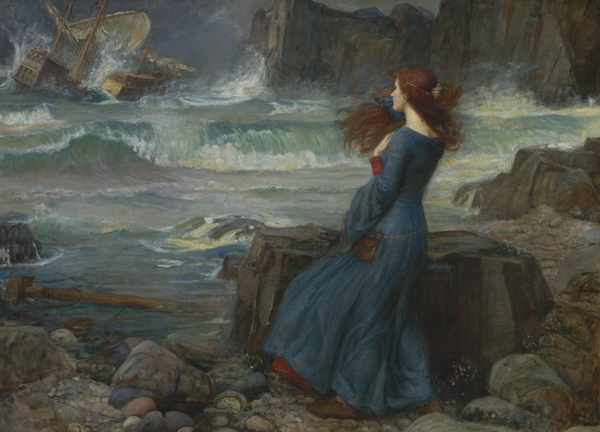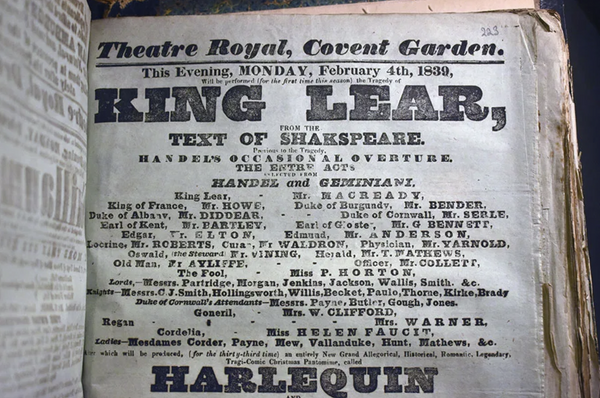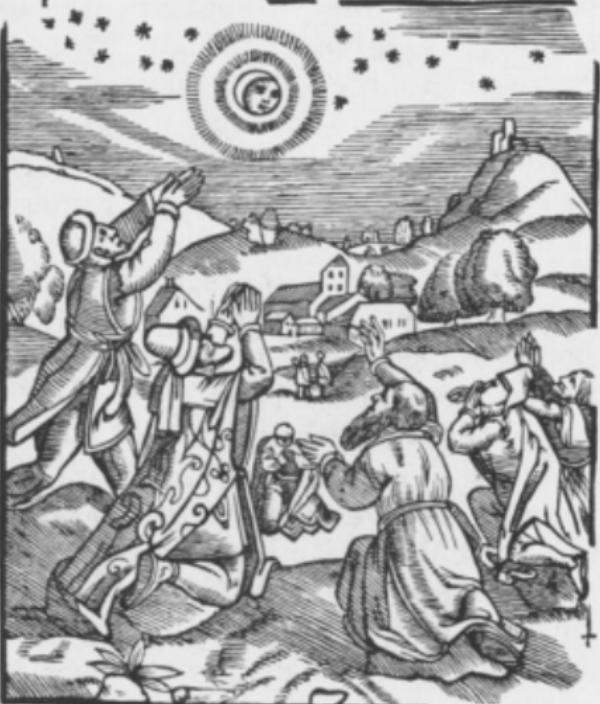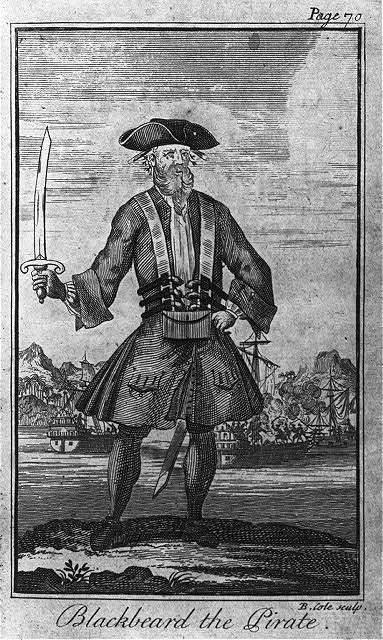Volume 18: February 8, 2021
Elizabethan Costumes as Status Symbols
By London Johns
The aim of many modern costume designers is to create a sense of realism. Plays set in a particular location and era require actors to dress in a way that communicates their characters’ time period and culture. Elizabethan costumes were created with different goals. Instead of conveying their characters’ positions in history, costumes were primarily intended to communicate their characters’ rank in a social hierarchy. The anachronism of Elizabethan costumes was a product of a society obsessed with visual markers of social status, where rank determined what kind of clothes people could and could not wear.
Dialogue and stage directions in Shakespeare’s plays provide some hints about what actors must have been wearing. For example, in As You Like It, Rosalind exclaims, “Alas the day! What shall I do with my doublet and hose?” (qtd. in Barton 350); her costume while dressed as a man must have aligned with typical male Elizabethan clothing. In The Taming of the Shrew, Vincentio notices his son in expensive clothing: “A silken doublet, a velvet hose, a scarlet cloak, and a copatain hat” (Shakespeare, The Taming of the Shrew 5.1.67-68). These are also examples of contemporary clothing -- “copatain” is an unusual word, but probably refers to a tall hat like a top hat. Even plays set in different eras for the most part used contemporary costumes; Julius Caesar “plucked me ope his doublet and offered them his throat to cut” (Shakespeare, Julius Caesar 1.2.276-277), hinting that Caesar’s actor would have worn a doublet instead of a Roman costume. Likewise, in Coriolanus Martius remarks that “these base slaves” take “doublets that hangmen would/Bury with those that wore them” (Shakespeare, Coriolanus 1.5.7-8). As Edward Everett Hale wrote, this was not the only anachronism in Shakespeare’s plays; though there were no clocks, pockets, or books with pages to turn in Caesar’s time, Cassius announces that “the clock hath stricken three” and Brutus puts a book in his pocket (qtd. in Hale 13). Though anachronistic, these choices were far from arbitrary. The diary of Philip Henslowe, the head of the Rose Theater, records the purchase of various expensive fabrics, as well as specific costumes like “a doublet and a pair of hose laid thick with gold lace,” “a pair of Venetians of cloth of silver wrought in red silk,” and more mysterious requests, such as “coats for giants” and “a robe for Time” (qtd. in Thorndike 395). The disregard for historical accuracy was surely not due to an inability to create or fund historically accurate costumes; the costumes that Elizabethan theaters did use were often fashionable, elaborate, and expensive.
A drawing of actors in a Shakespeare play also hints at the variety of costumes that Elizabethan actors might have worn. The only surviving contemporary depiction of a scene from a Shakespeare play is a pen drawing made by Henry Peacham on a folded folio sheet, probably of a scene from Titus Andronicus (Waith 20). In the center stands Titus, carrying a spear. The two men behind him are Roman soldiers, possibly his sons; the woman kneeling in front of him is Tamora; the two kneeling figures behind her are her sons Demetrius and Chiron; and the standing man beside them is Aaron the Moor (Levin 325). Beneath the drawing is a stage direction that is not a part of the play itself: “Enter Tamora pleadinge for her sonnes going to execution” (Waith 20). Below the stage direction are several lines from Titus Andronicus. The stage direction and lines copied below the drawing suggest that the moment portrayed could be 1.1.104 -- Tamora pleading for the life of her son (Schlueter 173). However, the drawing does not perfectly represent this scene. As well as the characters in Peacham’s illustration, several others should be onstage, including two men carrying a coffin, Tamora’s other son Alarbus, four of Titus’s sons, and “others as many as can be” (Shakespeare, Titus Andronicus 1.1.69). Aaron, the rightmost figure in the drawing, should be a prisoner at this point in the play and therefore not carrying a sword (Schlueter 174). These discrepancies led R.A. Foakes to believe that the drawing was “was probably not drawn from life” (qtd. in Schlueter 174); June Schlueter’s own conclusion was that the illustration may have been depicting a scene from an entirely different play (171), and Jonathan Bate’s interpretation was that the drawing did not depict a single scene at all, but a symbolic “composite representation” of the play as a whole (qtd. In Schlueter 174).
Regardless of which part of Titus Andronicus -- or another play -- it depicts, the Peacham drawing offers a valuable opportunity to see real Elizabethan costume choices. Interestingly, not all of the characters are wearing Elizabethan clothing. Instead, their costumes are pieced together from various time periods. One of the two soldiers standing behind Titus wears the armor of an Elizabethan infantry officer, the other armor from late 15th-century Germany. Titus himself wears a laurel wreath, a military cloak, classical-looking armor, and a spear. Curiously, Tamora’s two sons and Aaron all wear armor similar to that which Titus wears; the three non-Roman characters depicted in the sketch wear Roman armor, but two of the three Romans do not (Holmes 152). With the exception of Titus, whose robes indicate that he is Roman as well as an accomplished warrior, the Peacham drawing is an example of characters’ costumes matching their social status rather than their allegiance or historical period. The soldiers in the drawing are instantly recognizable as soldiers, but not accurately as Romans or Goths; Tamora’s crown marks her only as a queen.
As ideas about the social status of characters informed their costumes, ideas about the social status of real people informed what kinds of clothes actors could wear. Actors were aware of sumptuary laws, or laws that regulated what kinds of clothing people could wear depending on status. In the early Tudor period, “Players in enterludes” were exempt from this law, meaning actors could play characters who wore clothes above the actors’ stations; though Elizabeth I did not restate this exception, she did allow exceptions for “henchmen, heralds, pursuivants at arms, runners at jousts, tourneys, or such martial feats” (qtd. in Kastan 118). Even outside of the theater, sumptuary laws were not well enforced. Because costumes were often beautiful and expensive, actors sometimes surreptitiously wore them off of the stage; Philip Henslowe included in his actors’ contracts the requirement that they not leave the playhouse in their costumes (Bailey 266). Theaters also made money by renting out costumes to actors, audience members, or “whomever could afford them” (qtd. in Bailey 266).
Though sumptuary laws were not well enforced, they represented a serious cultural fear of social mobility. The ability of common people to dress like the elite would cause “a confusion of such degrees and callings as God hath ordained, when as men of inferiour degree and calling, cannot be by their attire discerned from men of higher estate” (qtd. in Kastan 104). The fear of impersonation of people of a higher rank even extended, as Susan Baker has written, to Shakespeare’s characters; though many characters disguised themselves and thus changed their social status, none disguised themselves (of their own volition) as someone who outranked them (Baker 313). For there to be order, social status had to be essential, visible, and unchangeable, both in real life and in the theater.
Because of the importance of clothing as a marker of social status, recognizable distinctions between ranks in characters’ costumes would have been important -- perhaps more important than congruity or historical accuracy. A costume that displayed a character’s rank would allow the audience to recognize the character’s place in society, which in turn determined the ways in which they could interact with other characters. It was easier to convey rank in contemporary costumes, which were familiar to audiences, than in realistic ones, which were considerably less so.
Works Cited
Bailey, Amanda. “‘Monstrous Manner’: Style and the Early Modern Theater.” Criticism, vol. 43, no. 3, 2001, pp. 249–284. JSTOR, www.jstor.org/stable/23126381. Accessed 9 Feb. 2021.
Baker, Susan. “Personating Persons: Rethinking Shakespearean Disguises.” Shakespeare Quarterly, vol. 43, no. 3, 1992, pp. 303–316. JSTOR, www.jstor.org/stable/2870530. Accessed 9 Feb. 2021.
Barton, Lucy. “Why Not Costume Shakespeare According to Shakespeare?” Educational Theatre Journal, vol. 19, no. 3, 1967, pp. 349–355. JSTOR, www.jstor.org/stable/3205244. Accessed 9 Feb. 2021.
Elizabeth I. “The Briefe Content of Certayne Actes of Parliament, Agaynst Th'inordinate Use of Apparell.” British Library, British Library, www.bl.uk/learning/timeline/item126628.html.
Hale, Edward Everett. “The Influence of Theatrical Conditions on Shakespeare.” Modern Philology, vol. 1, no. 1, 1903, pp. 171–192. JSTOR, www.jstor.org/stable/432433. Accessed 9 Feb. 2021.
Holmes, Martin R. Shakespeare and His Players. Scribner, 1972, Internet Archive, archive.org/details/shakespearehispl00mart/page/n169/mode/2up?q=peacham.
Kastan, David Scott. “Is There a Class in This (Shakespearean) Text?” Renaissance Drama, vol. 24, 1993, pp. 101–121. JSTOR, www.jstor.org/stable/41917297. Accessed 9 Feb. 2021.
Levin, Richard. “The Longleat Manuscript and Titus Andronicus.” Shakespeare Quarterly, vol. 53, no. 3, 2002, pp. 323–340. JSTOR, www.jstor.org/stable/3844343. Accessed 9 Feb. 2021.
Picard, Liza. “Henry Wriothesley, 3rd Earl of Southampton (1573-1624), Patron of Shakespeare.” 1600. British Library, British Library, 15 Mar. 2016, www.bl.uk/shakespeare/articles/clothing-in-elizabethan-england.
Schlueter, June. “Rereading the Peacham Drawing.” Shakespeare Quarterly, vol. 50, no. 2, 1999, pp. 171–184. JSTOR, www.jstor.org/stable/2902185. Accessed 9 Feb. 2021.
Shakespeare, William. Coriolanus. Edited by Barbara Mowat and Paul Werstine, Folger Shakespeare Library, The Folger Shakespeare, shakespeare.folger.edu/.
Shakespeare, William. Julius Caesar. Edited by Barbara Mowat and Paul Werstine, Folger Shakespeare Library, The Folger Shakespeare, shakespeare.folger.edu/.
Shakespeare, William. The Taming of the Shrew. Edited by Barbara Mowat and Paul Werstine,
Folger Shakespeare Library, The Folger Shakespeare, shakespeare.folger.edu/.
Shakespeare, William. Titus Andronicus. Edited by Eugene M Waith, Oxford University Press, 1998, Internet Archive, archive.org/details/titusandronicus0000shak/page/86/
Thorndike, Ashley Horace. Shakespeare's Theater. The Macmillan Company, 1916, Internet Archive, archive.org/details/shakespearesthea00thor_0/page/394/
Waith, Eugene M. “Introduction.” Titus Andronicus, by William Shakespeare, Oxford University Press, 1998, pp. 1–58.







